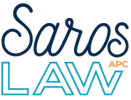IEP (Individualized Education Plan) & Section 504 Advocacy
IEP (Individualized Education Plan) & Section 504 Advocacy
Individualized Education Plan (IEP)
An Individualized Education Plan (IEP) is required for children who have been identified as special needs students and who have difficulty learning and functioning. It is, however, significant to note that not all children who struggle qualify for an IEP. The child must have been formally dragonized as having a disability as defined under the Individuals with Disabilities Education Act, and the school must have determined that the student needs special education so as to make progress in school and learn the general education curriculum.
When preparing an IEP, there are three main areas of school life that must be considered; the general education curriculum, extracurricular activities, and non-academic activities.
In the event that a learner with exceptional needs who has an IEP transfer, within the same academic year, to another district within the same special local plan area of the district s/he was last enrolled in, the new district ought to immediately continue to provide service similar to those described in the already existing IEP except where the parent and the local education agency decide to develop and adopt a new IEP that is consistent with the federal and state law.
For those individuals with exceptional needs residing in a state hospital and is eligible for services outlined in the federal Individuals with Disabilities Education Act, the state hospital is mandated to include a representative of the local education agency of the area and the individual’s state hospital teacher in its interdisciplinary team as is required under the Education Code 56851. This is so as to ensure that the individual’s needs are catered to.
Who requires an IEP?
Provided that the individual has been formally recognized to have a disability, the Education Code 56426.9 states that the following need an IEP:
- A child participating in the early childhood special education services and who has exceptional needs and is three years old
- A school-going individual with exceptional needs from early childhood through to high school
- Youth in the juvenile justice system with exceptional needs
Contents of an Individualized Education Plan
An Individualized Education Plan comprises a written statement that depicts the following:
- The child’s current academic achievement and functional performance
- Yearly goals for development
- The particular services to be used
- The dates and duration of those services
- The criteria, schedules, and procedures for evaluating if the objectives are being realized
- The extent to which the learner will not participate with non-disabled learners in regular education, extracurricular and non-academic activities
- Modifications for state or district-wide assessments and for grade 7 to 12 students, any modifications essential for the students to meet competency standards for graduation
- The mode of placement required to implement the IEP in the least restrictive environment
- Extended school year services where appropriate
How to get an IEP
First, a parent simply writes a letter to the child’s teacher, principal, or the special education administrative office. This letter is solely meant to inform the school of the concerns related to the child’s educational process and may also put a request for the school to begin assessing for special education. Within 15 days of receipt of the letter, the school district must provide the parents with an assessment plan. Thereafter, the parents have 15 days to give consent to any of the assessments outlined in the plan.
A parent can request a new IEP whenever it is needed. This request is done by writing and may state that the new IEP be scheduled, and the timelines remain in place, or that new or different assessments be done prior to the IEP. An IEP is supposed to be reviewed every year.
Factors to consider when developing an IEP
The Education Code 56341.1 lists the factors to be considered when developing a pupil’s individualized education program as:
- The strengths of the pupil
- The concerns of the parents or guardians for improving the education of the pupil
- The results of the initial assessment or the most recent assessment of the pupil
- The academic, developmental, and functional needs of the child
Section 504 Advocacy
Section 504 of the Rehabilitation Act of 1973 advocates for the non-discrimination of an individual based on his/her disability. It makes it illegal for federally sponsored programs to discriminate. It further demands public entities to provide reasonable accommodation to persons living with disabilities to the extent that such accommodation does not deeply alter the program. In some cases, the California Education Code imposes greater protection by way of according such children more rights and privileges than they would have received under federal law.
Learning Challenges Including ADHD, Anxiety, and Depression
The law provides for individuals with learning challenges that fundamentally affect the individual’s ability to learn and engage in the ordinary educational curriculum to be provided with an IEP that meets their specific learning needs.
Schedule a consultation with Saros Law APC
Call Saros Law APC at (310) 341-3466 for criminal defense assistance throughout the South Bay and Greater Los Angeles areas. Please fill out our contact form for new clients.







